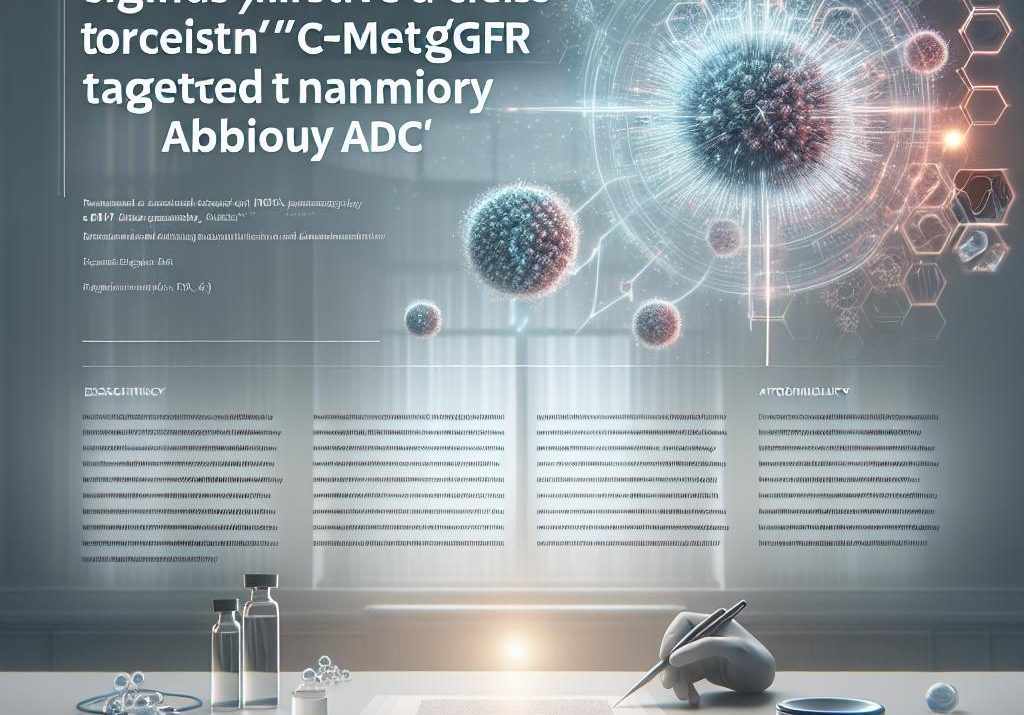Radiance Biopharma has secured an exclusive ex-China license to develop and commercialize RB-601 (KY-0301), a bispecific nanobody antibody-drug conjugate targeting c-MET and EGFR, from Novatim Immune Therapeutics. The asset carries IND clearances from both China’s NMPA and the FDA and is already in a Phase 1 study in China for advanced solid tumors. Deal economics include a $15 million upfront payment, up to $150 million in development and regulatory milestones, more than $1 billion in commercial milestones, and tiered royalties. Radiance will lead development in the United States and other licensed territories, while Novatim retains Greater China.
The editorial question is whether a bispecific nanobody ADC that dials down EGFR affinity can thread the needle between potency and safety in tumors where EGFR and c-MET signaling drive resistance and progression. ADCs have surged as a modality, but EGFR has historically been a challenging ADC target due to on-target toxicities in normal tissues. RB-601’s design attempts to mitigate that with tuned EGFR binding, site-specific conjugation for a homogeneous DAR of four, and an MMAE payload familiar to regulators and clinicians. If execution aligns with engineering, this could offer a differentiated path in crowded indications, such as NSCLC and colorectal cancer, where c-MET amplification and EGFR alterations often co-occur or emerge under TKI pressure.
For patients and healthcare professionals, the promise is a precision therapy that exploits dual-target biology without compounding toxicity. That will hinge on a coherent biomarker strategy that spans IHC, amplification, and mutation assays for both targets, along with clear thresholds that translate across geographies and sample types. Medical Affairs teams will need to drive harmonized diagnostics and early education on safety management, particularly neuropathy from MMAE and EGFR-related dermatologic and gastrointestinal events, to sustain dose intensity. Payers will seek evidence that dual targeting can deliver superior outcomes over approved options in defined biomarker subsets, not just incremental benefits. Capturing real-world data on adherence, dose modifications, and resource use will be pivotal if Radiance pursues tumor-agnostic or biomarker-defined labels.
Competitive dynamics are nuanced. On the antibody side, amivantamab has validated EGFR/MET bispecific targeting in EGFR exon 20–mutant NSCLC, while on the ADC front, telisotuzumab vedotin has shown activity in MET-high NSCLC. Uneven toxicity-liability trade-offs have hindered EGFR-directed ADCs. A bispecific nanobody ADC is a different architecture. Still, it will be judged against these precedents on efficacy-to-toxicity ratios, the durability of response in post-TKI settings, and combinability with TKIs or checkpoint inhibitors. CMC strength matters too: regulators increasingly scrutinize lot-to-lot consistency, and site-specific conjugation is a favorable talking point if Radiance can operationalize manufacturing at scale.
Strategically, this is another marker in the re-acceleration of China-to-global ADC licensing. As capital remains tight for early-stage biotechs, exclusive China rights deals with clinically de-risked assets offer speed for Western developers and a global path for Chinese innovators. Recent cross-border ADC partnerships have demonstrated that payers and regulators will engage if the biology is clear and the clinical story is concise. Still, bridge studies and ethnopharmacological considerations can slow timelines if not addressed early. Radiance’s leadership pedigree in ADCs may help, yet the bar for differentiation rises with every TROP2, HER3, and MET program pushing forward.
The near-term watchlist is straightforward: initial US clinical starts, clarity on biomarker cutoffs, and early safety signals relative to EGFR liabilities. The broader question is whether dual-target ADCs can become standard in resistance-driven oncology or remain niche tools; RB-601 will be an instructive test of whether more intelligent targeting and cleaner chemistry can convert ADC enthusiasm into payer-endorsed, guideline-embedded practice.
Jon Napitupulu is Director of Media Relations at The Clinical Trial Vanguard. Jon, a computer data scientist, focuses on the latest clinical trial industry news and trends.







